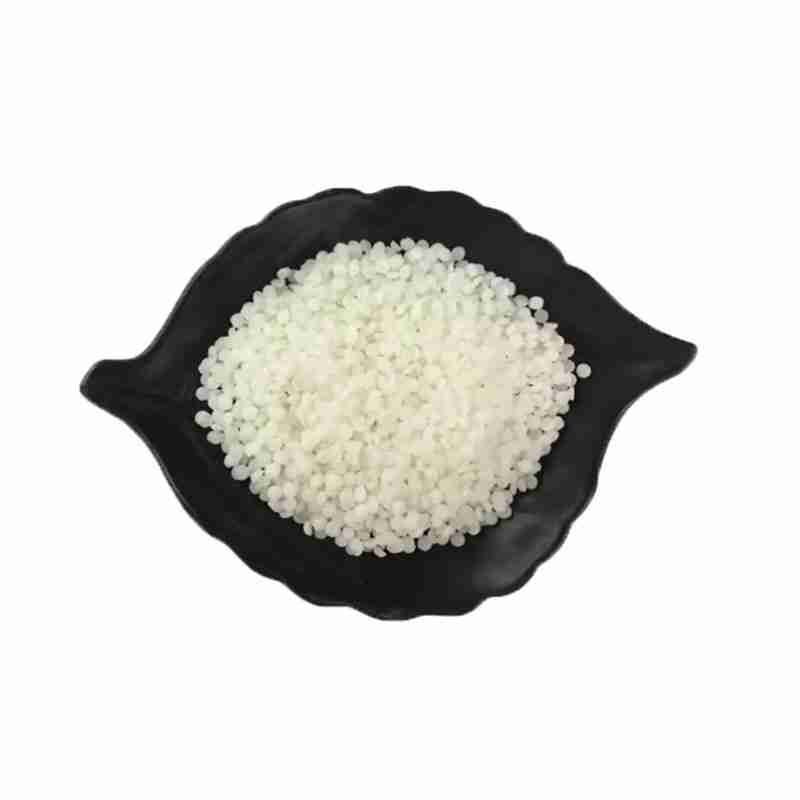N,N,N’,N’-Tetraacetylethylenediamine CAS#10543-57-4
Tetraacetyl ethylenediamine (TAED) is an efficient low-temperature oxygen bleaching active agent, made of ethylenediamine and acetic anhydride, which can biodegrade without any harm to the environment. In various detergent formulations, the product will not affect the functions of washing additives such as silicate, whitening agent and enzyme. It is mainly used as an additive of oxygen bleaching agent, and is an efficient low-temperature bleaching activator. Widely used in washing powder, color bleaching powder, dishwashing agent and other kinds of solid detergents and detergents.
发送询盘
N,N,N’,N’-Tetraacetylethylenediamine CAS#10543-57-4
| Tetraacetylethylenediamine Chemical Properties |
| Melting point | 149-154 ??C |
| Boiling point | 140 ??C (1.5002 mmHg) |
| density | 0.9 |
| refractive index | 1.4550 (estimate) |
| Fp | 140 ??C |
| pka | -1.23??0.70(Predicted) |
| form | Granular Powder |
| color | Off-white to beige |
| Water Solubility | slightly soluble |
| Merck | 14,9028 |
| BRN | 1795711 |
| InChIKey | BGRWYDHXPHLNKA-UHFFFAOYSA-N |
| CAS DataBase Reference | 10543-57-4(CAS DataBase Reference) |
| NIST Chemistry Reference | N,n,n’,n’-tetraacetylethylenediamine(10543-57-4) |
| EPA Substance Registry System | Tetraacetylethylenediamine (10543-57-4) |
| Safety Information |
| Safety Statements | 22-24/25 |
| WGK Germany | 1 |
| TSCA | Yes |
| HS Code | 29241900 |
- 2
- 2-diallylpent-4-en-1-amine
- 4
- 95-16-9
- Ammonium sulfamate
- Benzothiazole
- cas:67889-00-3ح2
- cas:83524-75-8 | pigment black 32
- cas:928836-00-4 | 2
- cas:932745-70-5 | 4
- Chemical Minerals
- Coconut diethanolamide
- Daily Chemicals
- discount
- for sale
- General pvc resin
- hexyl D-glucoside
- in stock
- Lauramidopropyl betaine
- LAURIC ACID MONOETHANOLAMIDE
- Petroleum Additives
- Plasticiser
- Ploymers
- price
- PVC
- quotation
- Raw Materal
- Remove term: Petroleum Additives Petroleum Additive
- SODIUM ETHYL 2-SULFOLAURATE
Related Products
POLY(VINYL CHLORIDE-CO-ISOBUTYL VINYL ETHER) is a copolymer that combines the properties of vinyl chloride and isobutyl vinyl ether. This polymer offers a balance of rigidity and flexibility, along with enhanced chemical resistance and durability. It is commonly used in the production of films, coatings, and adhesives due to its excellent barrier properties against gases and moisture, making it ideal for packaging and construction applications.
Chemical Name: Ashwagandha Extract
Synonyms: Withania somnifera, ext.; Withania Somnefera Extract
CAS: 90147-43-6
Appearance: Brown
Product name:HYDROXYPROPYL GUAR HYDROXYPROPYLTRIMONIUM CHLORIDE
Purity:99%
Appearance:Light Yellow Powder
Package:Customized according to customer needs.
Sample:Available
1-Octanol, also known as Capryl alcohol or n-Octanol, is a clear, colorless liquid with a characteristic waxy odor. It is an alcohol with eight carbon atoms in its chain, making it a part of the aliphatic alcohol family. This compound is poorly soluble in water but is miscible with ethanol, diethyl ether, and chloroform . It has a melting point of approximately -15??C and a boiling point of around 196??C . 1-Octanol is used in the production of esters, plasticizers, and as a solvent or intermediate in the synthesis of various organic compounds. It also finds application in the fragrance industry as a fixative in perfumes and can be used in the formulation of flavor and scent compositions . It is important to note that 1-Octanol is flammable and should be handled with care, storing it away from sources of ignition and heat .
Chemical Name: Quercetin-3-O-sophoroside
CAS No.: 18609-17-1
Molecular Formula: C27H30O17
Molecular Weight: 626.52
Chemical Name: Ammonium Iron(II) Sulfate
Synonyms: Diammonium iron bis(sulphate); iron (ii) ammonium sulfate
CAS No.: 10045-89-3
Molecular Formula: FeH5NO4S
Molecular Weight: 170.95
Chemical Name: Zinc citrate
Synonyms: Zinc citrate trihydrate
CAS No.: 546-46-3
Molecular Formula: C6H8O7Zn
Molecular Weight: 257.5
Appearance: White powder
Chemical Name: Arabic gum
CAS No.: 9000-01-5
Appearance: powder
Butylated Hydroxytoluene (BHT) is a synthetic phenolic antioxidant commonly added to foods, cosmetics, and packaging to prevent the oxidation of fats and oils, thereby extending their shelf life. It is also used as a preservative in a variety of products, including rubber, petroleum products, and animal feed. BHT is recognized for its effectiveness in maintaining nutrient levels, color, flavor, and odor in food products . It is known to have a melting point of 69-71??C, a boiling point of 265??C, and is soluble in ethanol, acetone, and benzene, but not in water, glycerin, or propylene glycol . BHT is also used in some dietary supplements due to its antioxidant properties . However, it is important to handle BHT with care, as it can cause skin irritation and is considered harmful if swallowed .
Tetraacetylethylenediamine is a fully acetylated derivative of ethylenediamine, offering a high reactivity as an intermediate in organic synthesis. Its unique structure makes it a critical component in the production of specialty chemicals and pharmaceuticals, ensuring a wide range of applications in the chemical industry.
Ethylhexyl Palmitate is a skin-conditioning ester, derived from ethylhexanol and palmitic acid, that imparts moisturization and a smooth texture to cosmetic and personal care formulations. It is valued for its emollient properties, enhancing the sensory experience of skin care products.
Chemical Name: o-Xylene
Synonyms: 1,2-Dimethylbenzene; ortho-xylene
CAS No.: 95-47-6
Molecular Formula: C8H10
Molecular Weight: 106.17


![Amides, coco, N-[3-(dimethylamino)propyl] CAS#68140-01-2](https://bgbchem.com/wp-content/uploads/2025/08/photobank-9-1.jpg)














